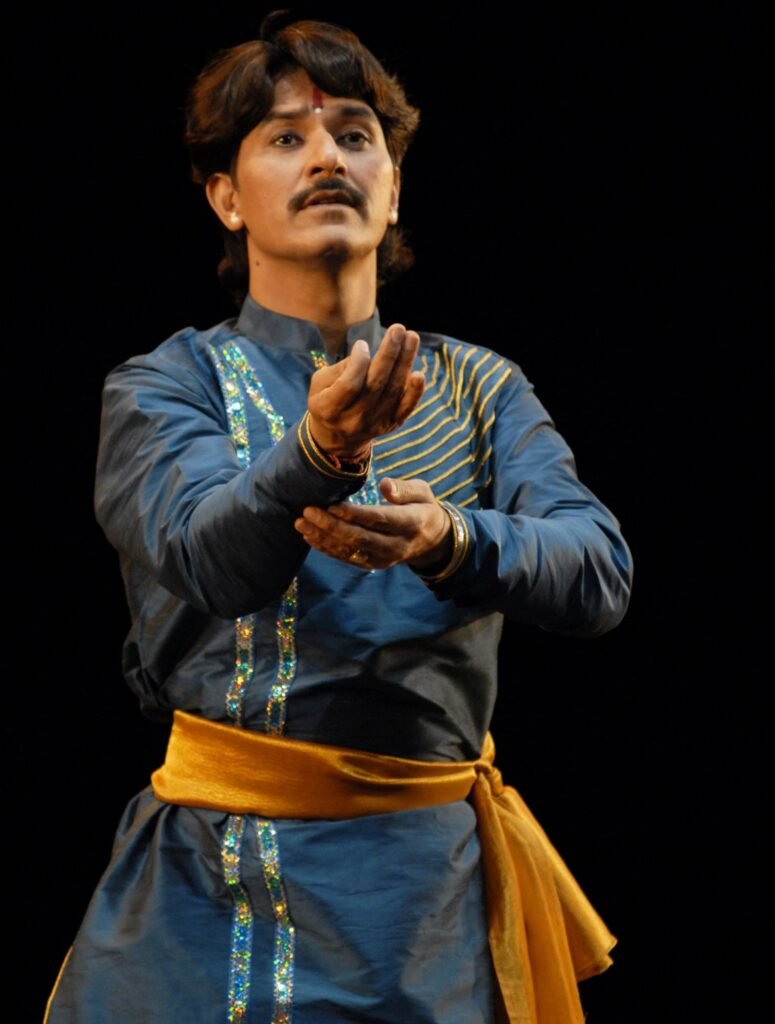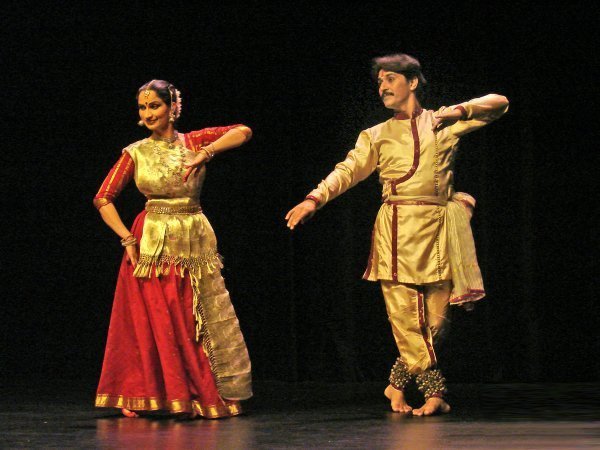About

About Pt. Rajendra Gangani
Pandit Rajendra Gangani, a celebrated Kathak virtuoso, stands as one of the foremost exponents of the Jaipur Gharana, revered for his masterful innovation and technical brilliance. Born into a lineage of distinguished Kathak dancers, Pt. Rajendra Gangani began his journey under the tutelage of his father, the legendary Pt. Kundan Lal Gangani, at the tender age of four. His artistry is an exquisite blend of tradition and modernity, embodying the timeless spirit of Kathak while infusing it with a contemporary flourish.
Over the years, Pt. Rajendra Gangani has captivated audiences with his unparalleled command of intricate Kathak bols, often leaving spectators spellbound with performances that are as mesmerizing in their precision as they are in their grace. His unique style deftly integrates the purity of classical dance with the creative impulses of creative choreography, earning him critical acclaim across the globe. From the grand stages of Queen Elizabeth Hall in London to the Festival of India in the USSR, and across the major cities worldwide, his performances have moved and transformed audiences, garnering standing ovations and deep admiration.
A master choreographer, Pt. Gangani has composed an array of group performances and dance dramas, each receiving widespread acclaim for their artistic ingenuity. Notable works such as Leele-Varnan, Maharaas, Raag Vistaar, Tribandhi, and many more exemplify his ability to weave together grace, emotion, and narrative depth. His choreographic excellence reflects a deep understanding of rhythm, music, and abhinaya (expression), seamlessly blending poetry, soulful melodies, and expressive movement into a singular artistic experience.
Beyond dance, Pt. Gangani is a gifted musician, equally proficient in playing the tabla, harmonium, and pakhawaj, which enriches his dance compositions with a rare musicality. His dedication to preserving and advancing Kathak has earned him numerous prestigious awards, including the “Sangeet Raj”, “Shastriya Nritya Shiromani”, “Best Dancer Award in China”, “Nritya Chudamani”, “and the highly coveted “Sangeet Natak Akademi Award”, bestowed upon him by the esteemed President of India, Dr. A.P.J. Abdul Kalam, in 2003.
In February 2024 under the choreography of Pandit Rajendra Gangani, 1,484 dancers performed at Khajuraho, a UNESCO World Heritage Site in Madhya Pradesh, setting a Guinness World Record. In recognition of this monumental achievement, Pandit Gangani was honored with the Best Choreographer’s Award.
Throughout his illustrious career, Pt. Rajendra Gangani has remained a beacon of Kathak’s rich heritage, teaching and performing at major festivals across Asia, Europe, America and Africa. His contributions to the dance form are celebrated worldwide, a legacy of artistry that continues to inspire and resonate across generations.




Pt. Rajendra Gangani’s father and Guru
About Guru
Pt. Kundan Lal Gangani

Guru Kundan Lal Gangani, one of the leading exponents and gurus of Jaipur Gharana of Kathak, was born in Sujangarh, in the Churu district of Rajasthan in the year 1926. His maternal uncle, the celebrated Kathak Guru Shri Narayan Prasad trained him, and he gave his first public performance at an early age of barely 8 years and then in the royal court of Raigarh at the age of eleven. He then continued with his performance in places like Khairagarh, Allahabad, Mumbai, Pune, Baroda, Kanpur and Jaipur and his last public performance was at Jodhpur in 1960. After that he turned his attention exclusively to teaching. He lived and taught in many centers namely Mumbai, Rajkot, Baroda, Jodhpur and Delhi.
Guru Kundan Lal gave equal importance to the lasya and the tandava ang of dance and, therefore, he also gave emphasis on abhinaya. He introduced new gats in vilambit laya and joined them into parans to create new and unique compositions. He also created numerous new bols, tihais, parans etc. He innovated in performing chalan and qayada as footwork and introduced chhanda at the onset of every thumri. He firmly believed in Kathak as a solo dance and always strived in his training to produce, above all, solo performers. He was a brilliant tabla player as well. He joined Kathak Kendra in 1970 as a Guru and taught here till he breathed his last on 16th July 1984.